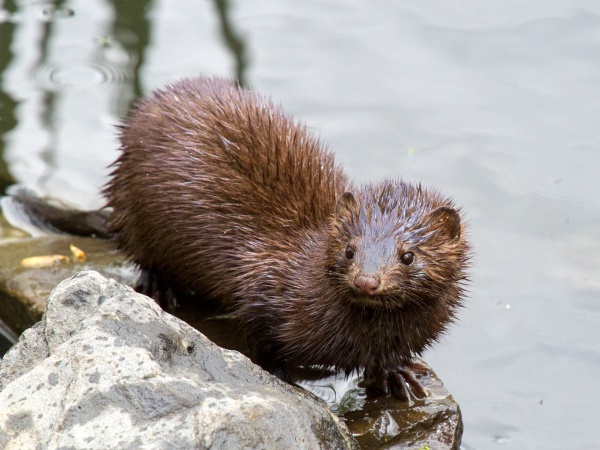Facts About American mink
The American mink is a captivating semiaquatic mustelid native to North America. Due to human activities, it has also established populations in Europe and South America. Despite its broad distribution, the species is classified as "Least Concern" by the IUCN. After the extinction of the sea mink, the American mink remains the sole extant member of the Neovison genus. As a carnivore with a varied diet, it hunts rodents, fish, crustaceans, frogs, and birds. However, in Europe, it is considered an invasive species, posing significant threats to local wildlife.
The mink holds a crucial position in the fur industry as the most economically significant fur-bearing animal. Evolutionarily, the American mink is a more specialized carnivore compared to its European counterpart. Fossils indicate its presence since the Irvingtonian period, with evidence of increasing size over time. Although it closely resembles the European mink, its nearest relative is the Siberian weasel. As of 2005, there are several recognized subspecies of the American mink.
Physically, the American mink is robust, possessing a long, streamlined body and a distinctive skull. It has a dense winter fur coat, which it sheds biannually. Agile and adaptive, it moves with a bounding gait on land, climbs trees, and swims effortlessly. It primarily relies on vision for hunting and uses scent glands to mark territory.
Behaviorally, the American mink is territorial, establishing its range near water. It nests in burrows and communicates through various vocalizations. Mating is notably aggressive, with males inducing ovulation in females. Mink kits are born blind and depend on their mother's care until they gain independence by autumn.
Dietarily, the American mink is a strict carnivore, consuming rodents, fish, amphibians, crustaceans, and birds. It can be a nuisance to poultry farmers but generally maintains a varied diet based on its habitat.
The introduction of the American mink to new regions has led to significant ecological repercussions. Escapes from fur farms and competition with the European mink have led to shifts in wild mink populations. The species is heavily trapped for its fur, with various color mutations bred for different shades. Domesticated minks are even utilized for ratting and bred for superior fur quality.
In literature, the American mink often appears in novels, especially in the UK, where it is perceived as an invasive species.

 United States
United States